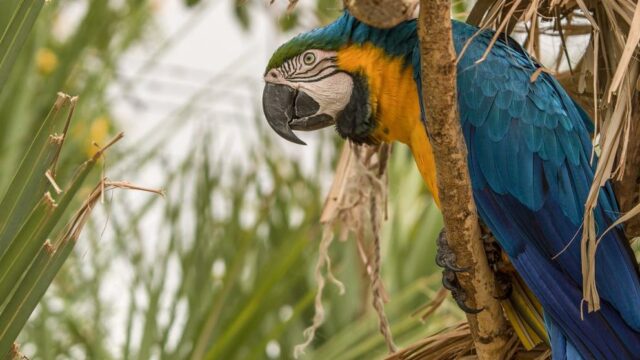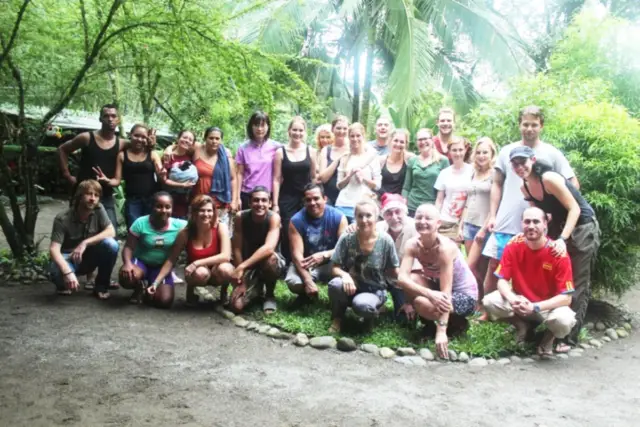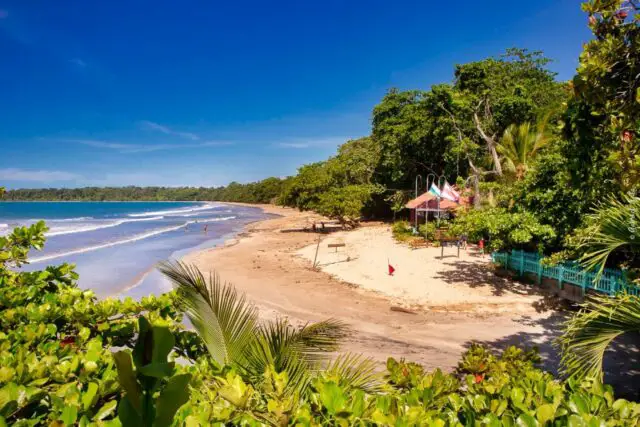In the Jaguar Rescue Center lives a toucan that suffers from psychiatric problems, an ocelot that suffers from depression, some parrots that cannot fly, a deer that has a paralyzed tongue… Some of the animals that arrive at this center in Costa Rica, located between Playa Chiquita and Punta Cocles (in the province of Limón, on the southern Caribbean coast), are released after a recovery period. For others, the sanctuary is their permanent home: due to their precarious health condition, they cannot return to nature.
Costa Rica is one of the countries with the greatest biodiversity in the world, equivalent to more than 5% of the total planet, according to government data. About 25% of the territory is made up of parks and nature reserves, which makes it one of the countries with the largest protected area in proportion to the national territory in the world.
Many Costa Rican centers and associations try to safeguard this biodiversity with conservation and protection programs in collaboration with the Government and the National System of Conservation Areas (SINAC). The task of saving and caring for injured, orphaned and confiscated animals falls to recovery centers like this one.
The Jaguar Rescue Center was founded in 2008 by Encar García and her late husband Sandro Alviani, a couple who met in 2001 in Costa Rica, when Sandro, a herpetologist or reptile expert, was already living in the country and she, a Catalan biologist and primatologist who worked for years at the Barcelona zoo, was on vacation. García decided to move to Costa Rica in 2005. Upon learning that two experts lived in the area, the neighbors began to bring injured specimens to their house.

The number of specimens that came to them grew more and more, and caring for them began to become a full-time job. For this reason they decided to buy more land. The center today measures approximately 22,000 square meters and has the capacity to permanently house some 160 animals.
The name Jaguar Rescue Center comes from one of the first calls received, when a man mistakenly mistook a poisoned ocelot for a jaguar. Since then, people in the area have called them “the people of the Jaguar in Chiquita”, even though they have never had one in the center.
This initiative has rescued between 500 and 700 specimens a year since its foundation, according to its own data, and released more than 40% of them into the wild. In 2021, it recovered 853 (443 mammals, 226 birds and 184 reptiles) of which 348 were released, 97 remained in the center and 408 died.
Tourists to finance the center
Costa Rica, a country of five million inhabitants, received 1.3 million visitors in 2021, according to the Costa Rican Tourism Institute. Before the pandemic, almost twice as many arrived, and the tourism industry represented almost 8% of the Gross Domestic Product and generated 10% of jobs. The Jaguar Rescue Center is self-financed with donations, face-to-face or online, and guided tours. The Government, say those responsible, helps with the recovery of the species, but does not offer other financing.
Among the volunteers who guide the tourists are many foreigners, mainly from North America and Europe, who want to try the experience of working with wild animals. “Since the center began to be more popular, many have begun to arrive. For us it was fundamental because taking care of all those who arrived was very complicated”, explains García. Today they have between 20 and 25 volunteers each month, in addition to a dozen permanent workers.

Volunteers work in various fields, helping biologists, doctors and researchers. They clean the cages, prepare the food, feed them, work in the office, act as tour guides in different languages… “Some feel inspired to totally change their life path after the experience, they feel the need to help protect nature and improve our planet,” says García. The center collaborates with several foreign volunteer agencies, but it also manages to recruit interested parties thanks to social networks such as Instagram.
The difficult decision of when to release an animal
Those who are newly rescued go to the Jaguar clinic, many in precarious conditions. Veterinarian Roger Tal then decides if they need surgery, if they can be released after a period of observation and treatment, or if it is better to let them live in the center permanently. Currently, there are about 35 tenants in the hospital. Veterinarians, nurses and biologists collaborate in their rehabilitation.
Some are rescued as babies because they have been orphaned. It often happens with monkeys whose mothers die from electric shocks from power lines. “The babies stay with us for at least two and a half years, then we follow all the protocols so that they are ready to return to nature,” explains García.
“The protocols are different for each animal: a baby sloth, for example, must remain in the incubator and be fed every two or three hours a day for more than a month, before starting to eat leaves. When it is about two years old, we take it to a big cage in the forest with other sloths for about a year, so as to get used to the sounds of the forest and nature,” continues Garcia.

It is not easy to know when an animal is ready to return to the forest. Some criteria, details the biologist, are that it is healthy, that it can get food by itself and feels comfortable in its natural habitat. When possible, they are released in La Ceiba or in the Cahuita and Manzanillo National Parks in collaboration with the Government, after a period of rehabilitation and treatment. Anyone who finds an injured specimen can contact SINAC or the center directly.
Encar García continues to work hard after the death of her husband in 2016. “To do this job you need passion and love. The center was born thanks to love, love for nature, for wildlife, and love between a Catalan biologist and an Italian herpetologist”, she reflects.

